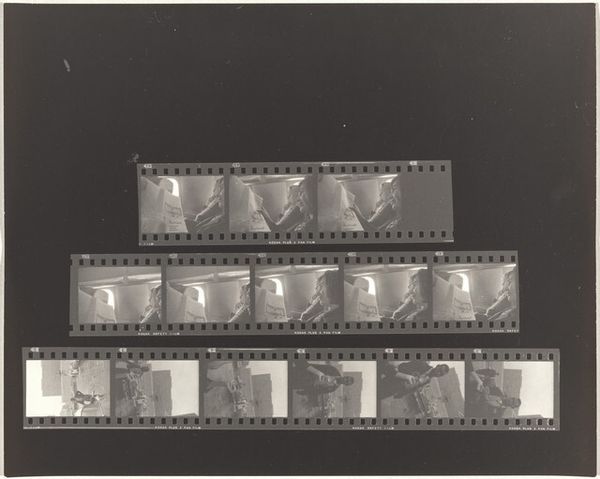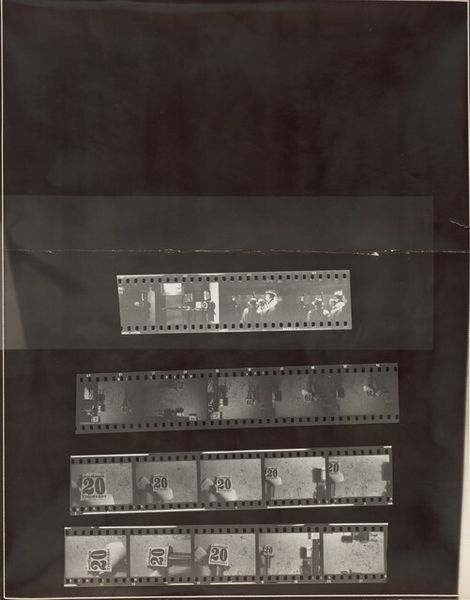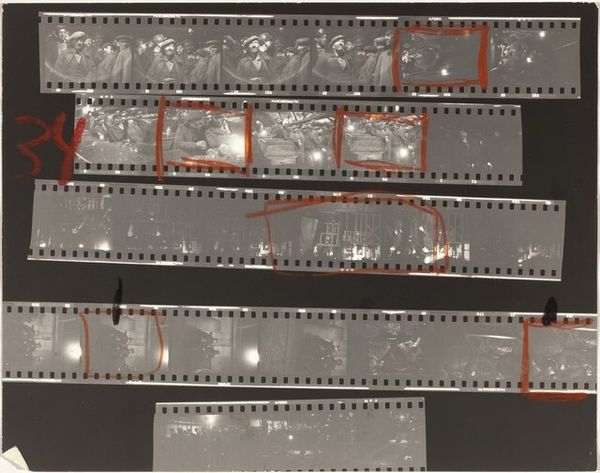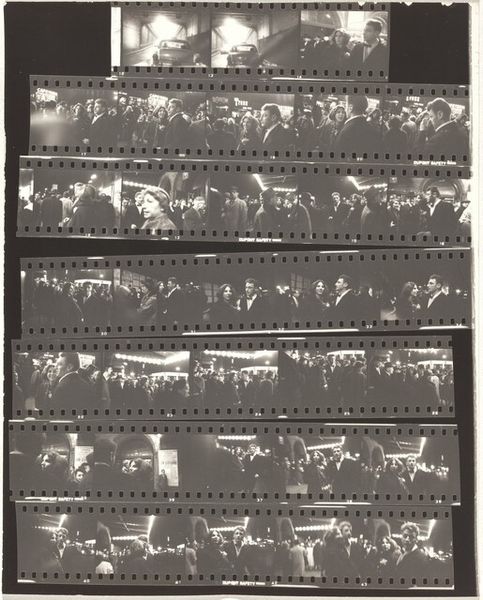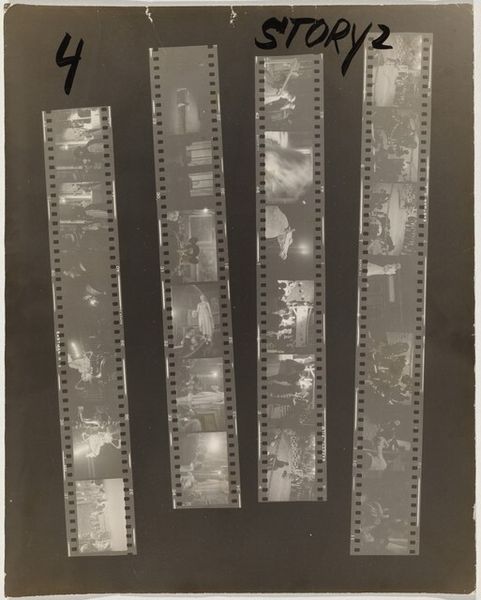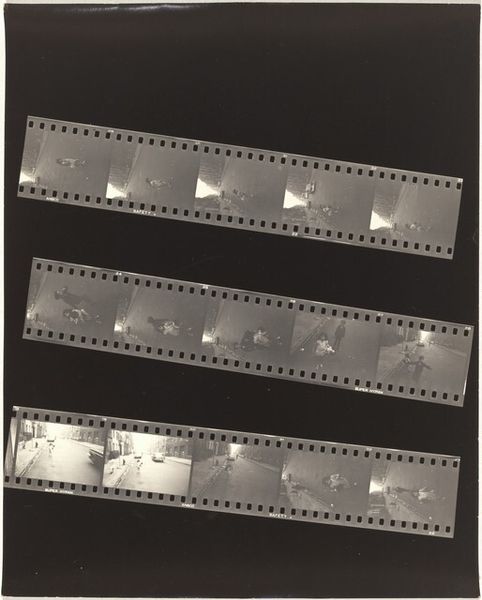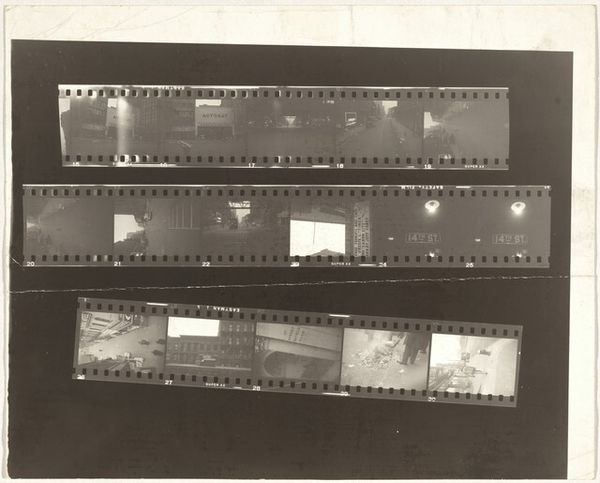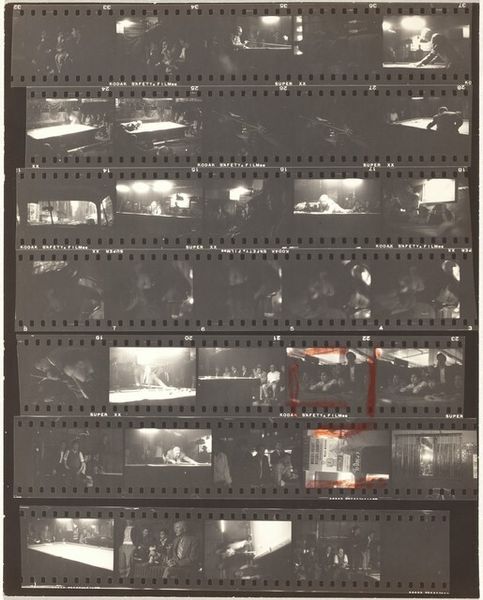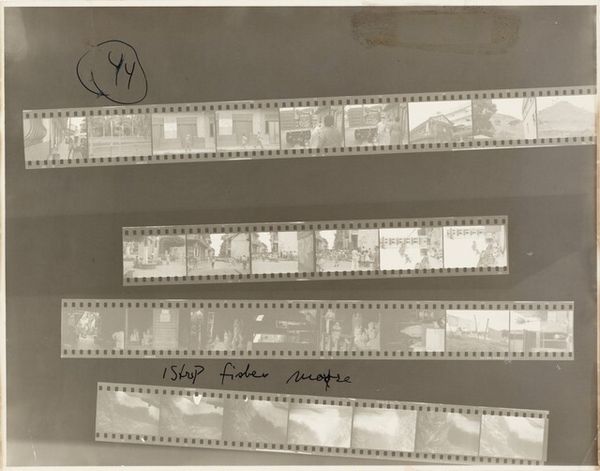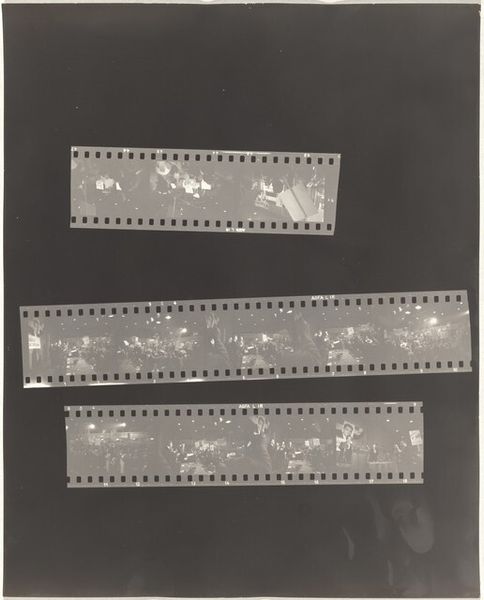
Dimensions: overall: 25.3 x 20.3 cm (9 15/16 x 8 in.)
Copyright: National Gallery of Art: CC0 1.0
Editor: This is Robert Frank's "Carnival--Basel no number," a gelatin silver print from 1952. It's a contact sheet showing rows of small, seemingly candid photographs. They're quite dark and grainy, and I'm finding it difficult to decipher the imagery. What's your read on this piece? Curator: This isn’t about the clear photographic image, is it? This contact sheet unveils the labour inherent in image making. The gelatin silver print itself, the darkroom process, Frank’s selection process – these all highlight the tangible construction of a photograph, contrasting with the slick, easily consumed images we're accustomed to. Think about the resources, both material and human, required to produce these images, even these considered discards on a contact sheet. Editor: So it's more about the 'making of' rather than the carnival itself? I hadn't thought of the physical effort behind even seemingly spontaneous shots. Curator: Precisely. It is street photography, capturing an unvarnished reality. Frank, using a handheld camera, democratized photography, moving it away from the posed studio portrait. Consider the social implications: who has access to photographic equipment and who is being photographed? How does this interplay with power structures and representation? This carnival is not a glossy depiction of revelry, it appears almost desperate, as though those enjoying some freedom from capitalist constraints in revelry are still burdened by the capitalist context within which these escapes exist. Editor: I see your point. By showing the contact sheet, Frank makes visible the often-hidden labor and choices that go into creating a single image. And framing it like this, challenges our perceptions of street photography as purely observational. Curator: Indeed. It's about shifting focus. Considering process and consumption allows us to ask much deeper questions about artistic creation. Editor: Thanks. I’m walking away thinking less about the finished product and more about the act of its production. Curator: As intended. It invites scrutiny of not only the image, but also the mechanisms behind its existence.
Comments
No comments
Be the first to comment and join the conversation on the ultimate creative platform.
